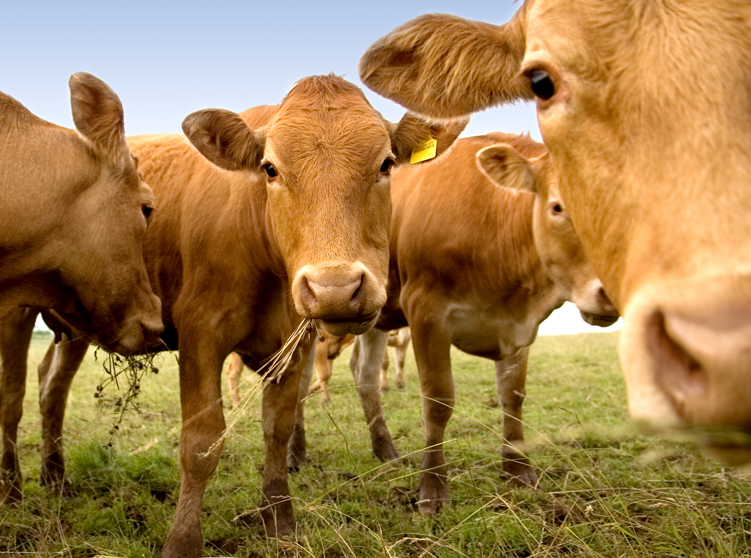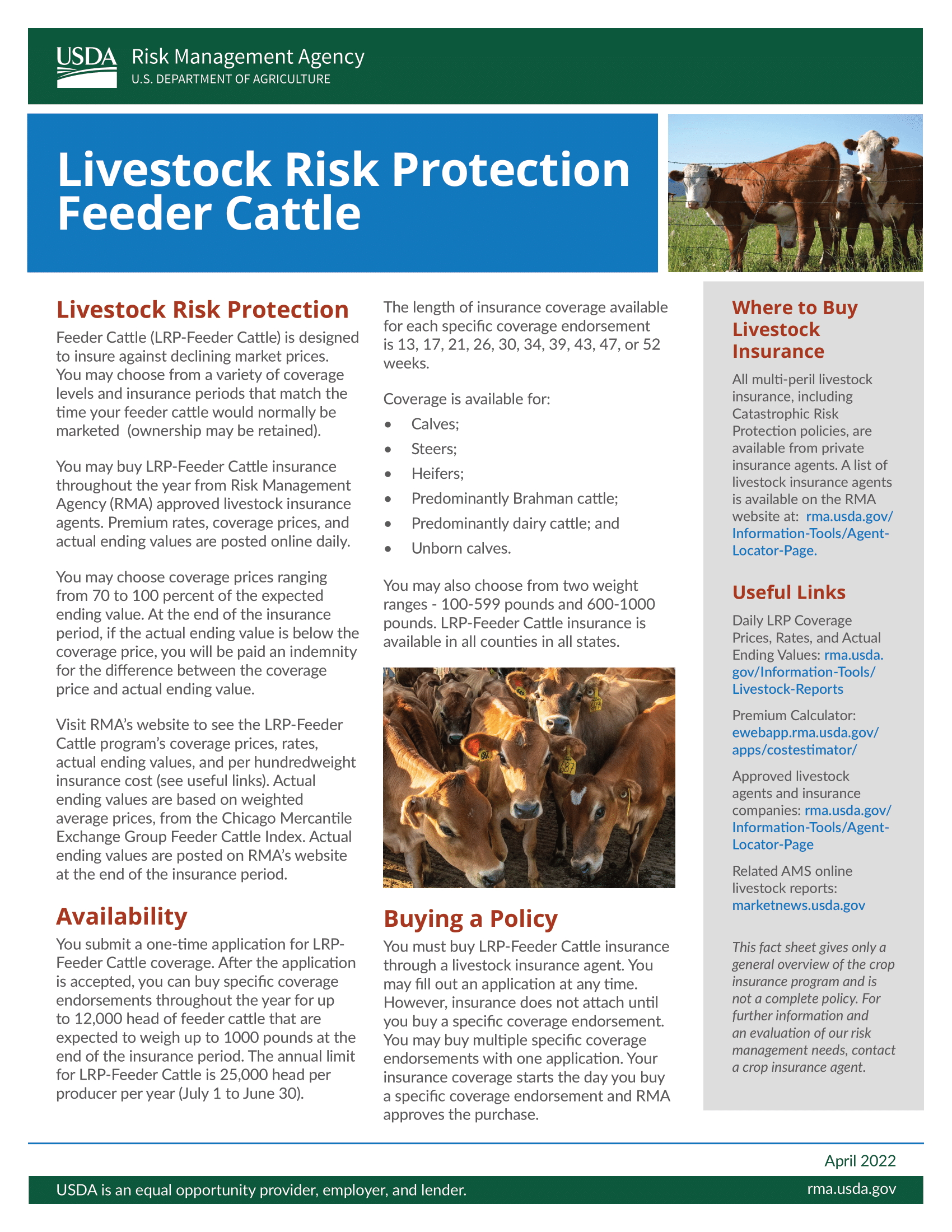Comprehending Animals Threat Defense (LRP) Insurance Coverage: A Comprehensive Overview
Browsing the world of animals danger protection (LRP) insurance policy can be a complicated endeavor for several in the agricultural field. This sort of insurance coverage provides a safety and security net versus market fluctuations and unexpected circumstances that might influence animals producers. By recognizing the intricacies of LRP insurance coverage, manufacturers can make enlightened decisions that might safeguard their operations from financial dangers. From just how LRP insurance operates to the various protection choices available, there is much to reveal in this comprehensive guide that can potentially shape the method animals manufacturers approach danger monitoring in their businesses.

Just How LRP Insurance Coverage Works
Occasionally, recognizing the auto mechanics of Livestock Risk Defense (LRP) insurance coverage can be complicated, but damaging down just how it functions can supply clarity for farmers and ranchers. LRP insurance policy is a threat administration tool designed to shield livestock producers against unanticipated rate decreases. The plan enables manufacturers to set a coverage level based on their particular needs, selecting the number of head, weight range, and protection rate. When the plan is in area, if market costs drop below the protection price, producers can submit a case for the difference. It is very important to note that LRP insurance is not an earnings assurance; rather, it concentrates entirely on rate danger protection. The protection duration typically varies from 13 to 52 weeks, providing versatility for manufacturers to select a period that straightens with their production cycle. By using LRP insurance, breeders and farmers can alleviate the economic threats connected with changing market rates, making certain higher security in their procedures.
Eligibility and Coverage Options

When it comes to protection choices, LRP insurance policy offers manufacturers the flexibility to pick the coverage degree, protection period, and endorsements that finest suit their risk management requirements. By comprehending the eligibility requirements and protection choices offered, livestock producers can make informed choices to take care of threat properly.
Benefits And Drawbacks of LRP Insurance Coverage
When assessing Livestock Risk Protection (LRP) insurance coverage, it is essential for animals producers to evaluate the negative aspects and benefits integral in this danger management tool.

One of the main benefits of LRP insurance policy is its ability to give defense versus a decrease in livestock costs. Furthermore, LRP insurance supplies a degree of adaptability, allowing producers to personalize protection degrees and plan periods to fit their certain needs.
Nevertheless, there are likewise some disadvantages to think about. One constraint of LRP insurance policy is that it does not secure versus all kinds of threats, such as illness episodes or all-natural calamities. Moreover, premiums can in some cases be pricey, especially for manufacturers with large livestock herds. It is vital for producers to thoroughly examine their specific risk exposure and financial situation to establish if LRP insurance coverage is the best risk monitoring device for their procedure.
Comprehending LRP Insurance Policy Premiums

Tips for Making The Most Of LRP Conveniences
Making the most of the advantages of Livestock Risk Defense (LRP) insurance coverage calls for strategic planning and positive danger monitoring - Bagley Risk Management. To maximize your LRP insurance coverage, consider the following suggestions:
Frequently Examine Market Problems: Keep informed concerning market fads and rate fluctuations in the animals sector. By checking these variables, you can make informed decisions regarding when to buy LRP insurance coverage to protect against possible losses.
Establish Realistic Protection Levels: When selecting coverage levels, consider your manufacturing costs, market price of livestock, and potential risks - Bagley Risk Management. Establishing realistic coverage levels guarantees that you are appropriately safeguarded without paying too much for unnecessary insurance coverage
Diversify Your Protection: Instead of relying solely on LRP insurance policy, think about diversifying your risk management methods. Integrating LRP with other threat monitoring tools such as futures agreements or options can offer extensive protection against market uncertainties.
Testimonial and Readjust Coverage On a regular basis: navigate here As market conditions change, occasionally review your LRP insurance coverage to guarantee it aligns with your existing danger exposure. Changing coverage degrees and timing of acquisitions can help maximize your danger security strategy. By complying with these suggestions, you can optimize the benefits of LRP insurance policy and secure your animals operation versus unexpected threats.
Conclusion
To conclude, livestock web link danger defense (LRP) insurance policy is a valuable tool for farmers to take care of the economic threats connected with their animals procedures. By comprehending just how LRP functions, eligibility and coverage choices, in addition to the benefits and drawbacks of this insurance, farmers can make enlightened decisions to safeguard their source of incomes. By meticulously taking into consideration LRP costs and implementing methods to take full advantage of benefits, farmers can minimize potential losses and make certain the sustainability of their procedures.
Animals manufacturers interested in obtaining Animals Danger Security (LRP) insurance policy can explore a variety of eligibility requirements and coverage alternatives customized to their certain animals procedures.When it comes to insurance coverage alternatives, LRP insurance policy supplies manufacturers the versatility to choose the coverage degree, insurance coverage duration, and endorsements that finest fit their threat administration demands.To comprehend the ins and outs of Livestock Threat Defense (LRP) insurance completely, understanding the factors affecting LRP insurance coverage premiums is essential. LRP insurance policy premiums are figured out by different aspects, including the coverage degree picked, the anticipated price of livestock at Full Article the end of the protection period, the kind of animals being insured, and the length of the coverage duration.Evaluation and Change Protection On a regular basis: As market conditions alter, regularly evaluate your LRP coverage to guarantee it straightens with your current threat direct exposure.
Comments on “Strategic Collaborations for Strength: Bagley Risk Management”